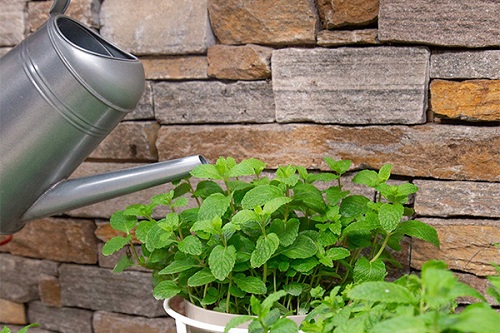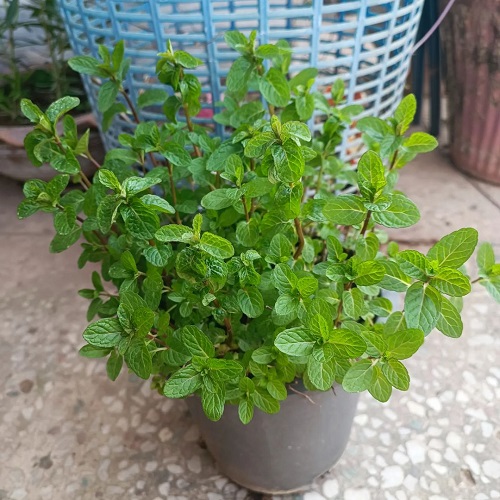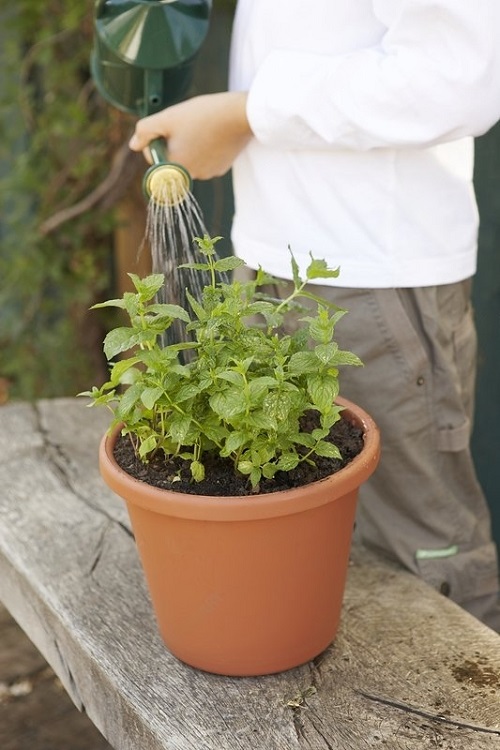Learn How Often to Water Mint and keep this herb healthy with these tips! We have covered some best tricks too!
Are you confused about How Often to Water Mint? Well, don’t worry! This guide will help you to keep it thriving!
Learn How to Grow Mint in Small Space here
How Much Water Does Mint Require?
Mint, a perennial herb, thrives in well-watered conditions but dislikes being waterlogged. Adequate drainage is necessary for its roots to avoid water accumulation.
To keep your mint plant healthy, it’s best to water it deeply and consistently, at least twice weekly. If your mint is planted in the ground, aim to provide around 1-2 inches of water per week. However, all this depends a lot on the type of climate you live in so it would be a good idea to water the plant when the topsoil feels a little dry to the touch.
In contrast, if it’s in a container, you may need to water it more frequently as containers tend to dry out faster.
Find 5 Do’s and Don’ts of Growing Best Mint Ever here
How Often to Water Mint?

Mint requires consistently moist soil, but it should not be soggy. To water mint, soak the soil until water runs out of the drainage holes at the bottom of the pot. Allow the top inch or two of the soil to dry out before watering again.
During hot summer days, mint may need to be watered more frequently. In winter, water as needed to keep the soil from drying out completely.
Read about 27 Types of Mints You Should Grow At Least Once here
Watering Mint Seedlings
- Watering mint seedlings requires more care and attention as they are delicate and young. To achieve the best results, consistent and attentive watering is crucial.
- As a general guideline, ensure the soil is adequately hydrated and is never completely dry.
- Once the seedlings grow to an inch or two in height, reduce the watering frequency to every other day, ensuring the soil remains moist but not waterlogged.
- To check the moisture level of the soil, gently press the surface with your finger. The soil should feel slightly dry before the next watering session.
- You can also use the bottom watering method, or it would be a good idea to use a plant mister – as this will water the seedlings without disturbing them.
Watering Mint Indoors

It is always good to wait before you reach out for a can to water mint plants while growing them indoors.
- Water the plant deeply, allowing the soil to dry out at least an inch from the top before watering again.
- Water regularly, but make sure not to overwater it. Moisten the soil when it feels dry to the touch, and it is best to water it in the morning.
- When watering, make sure to water the soil and not the plant itself to avoid any fungal diseases.
Learn Growing Mint in Water here
Watering Mint Plants Outdoors
When growing mint outdoors, weather patterns significantly influence watering requirements. During dry spells, frequent watering is essential.
As a general rule, water when the top inch of soil feels dry. In hot weather, this may require frequent watering, while a cool weather can reduce watering intervals to a few days.
To prevent waterlogging, always check the soil’s moisture level by using your finger or a moisture meter before adding more water.
Note: If you are growing mint in hanging baskets, then it will require a little frequent watering.
Learn Growing Mint Indoors & How To Care For It here
Watering Potted Mint Plants Outdoors
Potted plants require more frequent watering than those growing in the ground because they tend to dry out faster.
To ensure optimal growth, water container-grown plants when the top inch of soil feels dry, avoiding overwatering. However, the frequency may vary depending on climate, pot size, and soil type so adjustments may be necessary.
Some Important Points to Consider

- These plants thrive in direct sunlight, so during hotter months in warmer climates, it’s essential to water them more frequently.
- While watering, it’s important to avoid getting the leaves wet, as this can lead to the development of fungal diseases.
- When growing mint in containers, make sure to use a pot with adequate drainage holes and fill it with well-draining soil.


